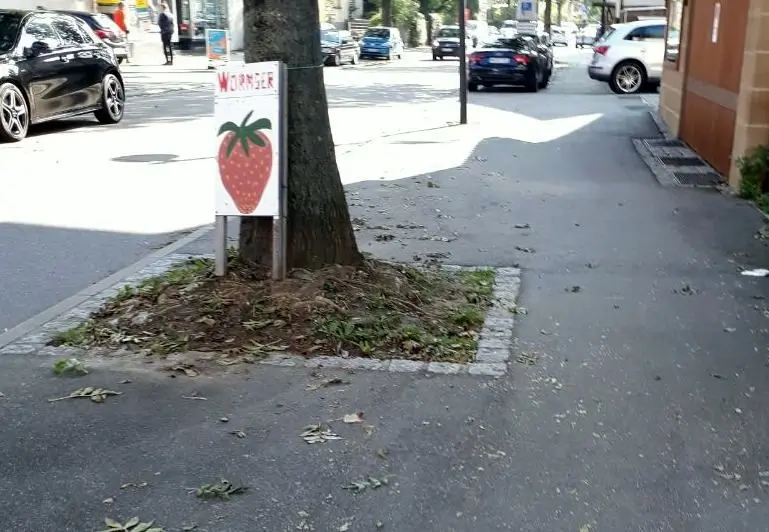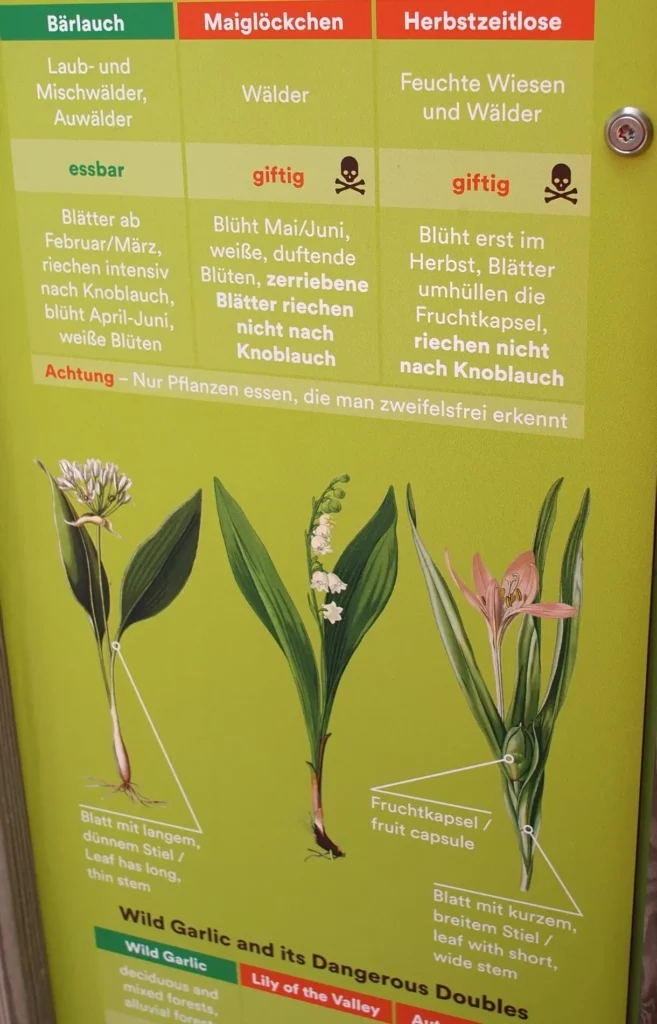Last Updated on August 12, 2024
Local products are in great demand, although it is not always easy to find them. In this post – where you can find farmer market in Germany and whether your can eat for free apples and Co on the way.

German wine classification system and wine regions
New heating law in Germany
Germany by car. Basic information
Christmas cookies in Germany
Broom on the house. What is Besen?
They are already among us: ticks, wasps and Co
How to sort waste in Germany – what waste is going where
Farmer market in Germany. Where to look?
Weekly farmer market (Wochenmarkt, Bauermarkt)
At the weekly market in the city center. Local farmers’ caravans come to the market, but not only they. There is also a cheese shop, meat and fish shop, sometimes local artists or artisans.
Not all of them sell local products. The price is different, and at the same farmer, but in different cities it is also different. For example, the market in our retirement-decent suburban town is more expensive than in the neighboring large city.
Farmer shops on the farm or by the road
In the shop of the farm itself. Some of these farms can be found using Google (“Hofladen“), but not all. It is very rare for farmers to acquire their own websites. Such clever ones are found mostly closer to large cities. Some farmers unite and set up one shop somewhere closer to a more or less busy road.
Farm’s shop have the signs in the pictures of apples, strawberries with hands.
Meat and milk are sometimes sold at a 24/7 vending machine next to a farm or butcher’s shop. Look for them in the words “Fleischautomat” or “Frischomat”.
In Advent weeks christmas trees farms are also open (Weihnachtsbaum Markt). There you can choose and cut your own Christmas tree (“Weihnachtsbaum selbst schlagen”).
Self-service
Some of the roadside shops have self-service cash desks.
Driving along the road, you see a large poster “Flowers – you cut it yourselves” (Blumen Selbstschneiden, photo below). If you stop, you will find a large iron money box, flower knives and a price list. The only difficulty will be identifying the flowers by name.
The same cash box are often found when they sell pumpkins or pre-packaged apples, nuts, and sometimes wine. Walking through the vineyards, you can also come across “self-service cellars”.

On some farms, you can gathered the fruits and berries yourself (selbst pflücken). And if the fruits on the farm are cheaper (not always) and fresher than the store ones, then picking yourself will be even cheaper. However, this option is rare and less and less popular with farmers.
In addition to fruits and vegetables, there are also eggs and milk, pasta made from own grain, jams and liqueurs.
Most shops are open in the afternoon on weekdays, sometimes also on Saturday mornings.
Renting a tree
You have a big family? Then it is useful to rent a tree (verpachten) and collect everything that hangs on it.
Sometimes there are papers on the trees with information about where they can be rented from. If there is no such paper, then you can ask at the Rathaus.
Another way to find a tree: Streuobstbwiesenbörse. Type this word on the Internet with you city name and find a place where local farmers offer their trees.
Free cheese only in a mousetrap? Fruits and berries “for free”
You can often find an unprotected and not fenced orchard. The earth is strewn with apples, which at first glance are of no use to anyone.
The people say that “if it is lying around, then you can take it”. Let’s try to find out if this is so. At the same time, we will find out what can be collected in the forest.
In the field and in the city
Since 1975, picking a fruit off the ground or plucking it from a tree is equal to stealing (Mundraub). In this case, no trees or shrubs are “ownerless”. They are owned either by the farmers, or by the city, or by the owner of the forest – that is, the owner of the site. Another thing is that it is unlikely that a farmer or city representatives will stand with a gun and check what “accidentally fell” into your hands and bags when you walked past their tree. And the city will even be glad if you clean up a little on its territory.
Of course, there is a question, how can I determine who owns a tree – a city or a farmer? Unfortunately, there is no definite answer. Feels like, by eye or on websites. The absence of a fence is not a sign of “urban” ownership. Cities usually own trees along city roads or in public parks. Farmers – trees along their fields and trees planted in rows in the form of a garden. I would say there is one more sign: if a tree has degenerated and gives an ugly apples in black dots, then it is urban (but why do you need this wild apples then?). If the apples are beautiful and even, then they are not ownerless.
Cities and villages sometimes specify where they are allowed to harvest from their own trees. For example, the city of Ulm indicates this on the site: http://daten.ulm.de/daten/single/streuobstwiesen-in-ulm
There is an initiative to mark the free harvest with a yellow ribbon (gelbes Band). If you see one, then you can be sure – you can collect here.
There is a website where you can find trees from which their owners are allowed to harvest, or trees that visitors to the site believe do not belong to anyone (without guarantee): https://mundraub.org/
In any case, such a gathering of fruits and berries is limited by the fact that you should use them only for your own needs, not for sale.
Follow me
In the forest and in the meadow
Is it possible to pick berries, mushrooms, branches in the forest, and wild flowers in the meadows?
In principle, it is possible, but, as always, there is a BUT:
- in a small amount
- do not dig anything
- only those that can be collected at all (that is, those that are not on the lists of protected species)
- not in places where there are signs of a “protected area” (a large bird on the sign or information stands where it is written that the area is protected). In these places, as a rule, nothing can be collected at all.
- there is a list of trees that cannot be broken branches
To simplify, it translates into the following rule: it is better not to pick flowers at all, because you do not know how protected they are (unless dandelions are an exception). And if you pluck it, then in the size of a small bunch. And certainly not to dig to plant for your garden.
Raspberries, strawberries, blueberries and blackberries – in small quantities. And also wild garlic – but very carefully so as not to confuse it with very poisonous lily of the valley and сolchicum autumnale (purple autumn flower, similar to crocus). Every year, people are reported to be confused with a fatal outcome.

Here is just a small list of commonly protected flowers: carnations, lilies, tulips, daffodils, scilla, orchids, aconite, fritillaria, gentian, lilies of the valley.
Mushrooms
As for the mushrooms, some of them are also protected, such as chanterelles, boletus and leccinum. They can only be collected in a strictly defined amount or cannot be collected at all (truffles and greenfinches).
Therefore, before packing the baskets, you need to get acquainted yourself with the rules in the specific federal state. Otherwise, you can get a fine, as happened with two Italians who collected 10 kg of mushrooms in the Black Forest and paid more than a thousand euros for it.
In addition, mushroom pickers should not forget that they have no right to sell these mushrooms, only to eat them on their own.

Other food topics – #food.
Do you enjoy the site without cookies and maybe without ads? This means that I work for you at my own expense.
Perhaps you would like to support my work here.
Or Cookie settings change: round sign bottom left
